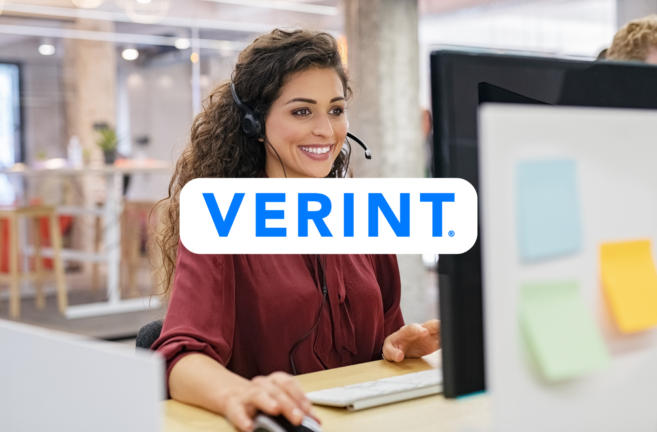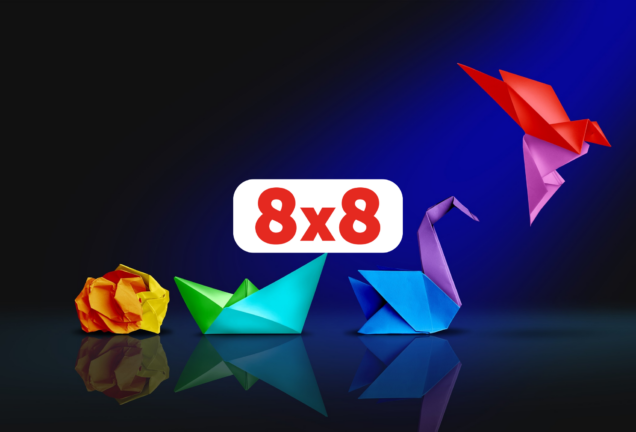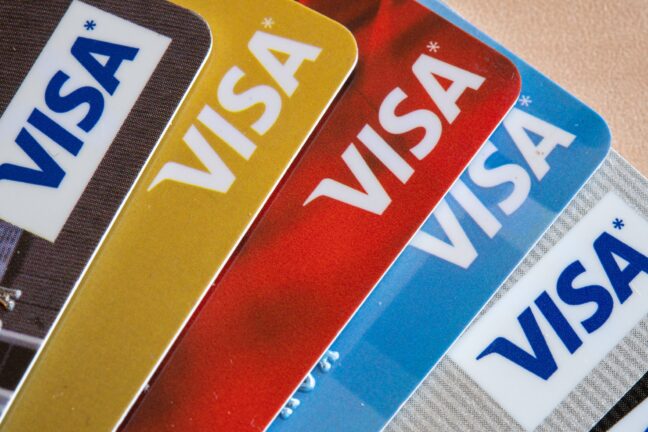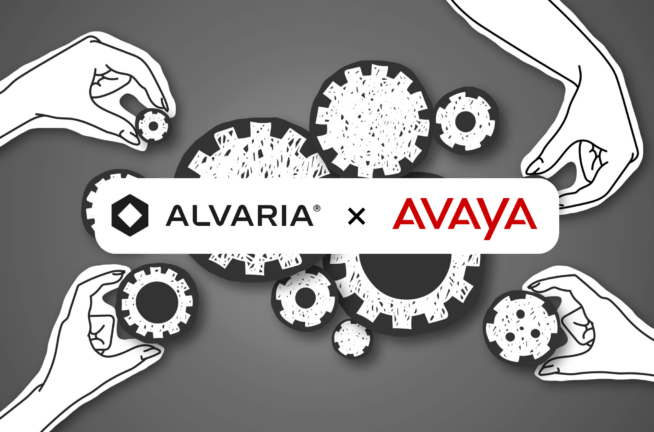Attention is fleeting. The average human attention span is 47 seconds; app sessions typically last only 1-2 minutes. Brands have little time to capture customer attention and prove the value of what they’re offering in an app.
What’s more, activation rates wane sharply during the first two days after download and then decline gradually over the next 30 days, according to Airship research. Add to that the rising cost of acquisition since the release of iOS 14 and it’s clear why the activation phase (Days 1-30) of the app lifecycle is so critical to the mobile customer journey.
High-performing brands use onboarding effectively to drive repeat traffic and promote activation. According to our data, when onboarding works well, there are spikes in traffic throughout the first 30 days after download; and brands with spiking traffic see a higher activation rate at Day 30 than brands without spikes (see graph).
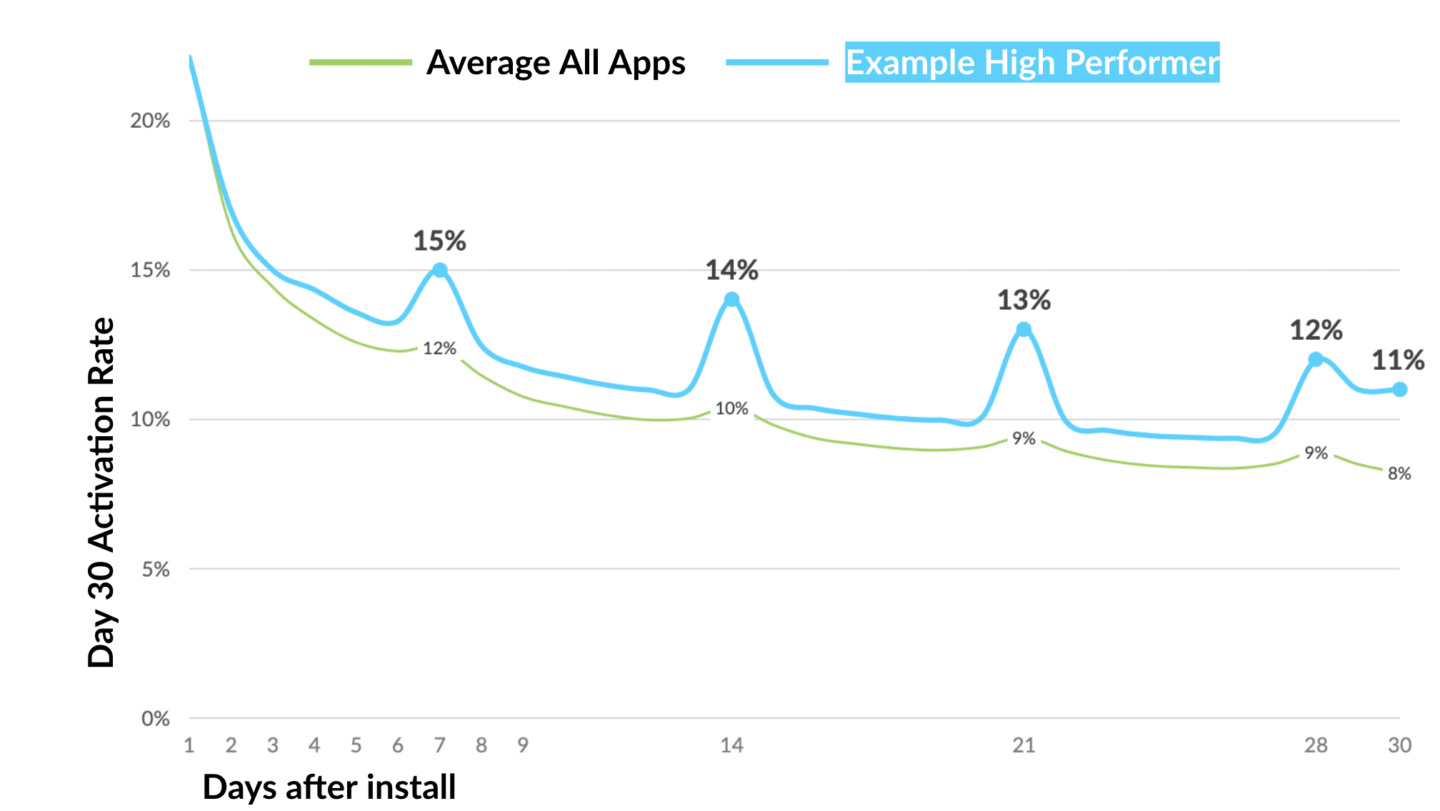
The data also shows this spiking pattern correlates with welcome series messaging delivered via push notifications or email.
Here, I summarize the activation strategies of high-performing brands to show how they encourage return visits from new customers.
1 - Get the Opt In
If you’ve been to any D2C shopping website in the last year, you’ve seen the 15% discount offers for email opt-ins and the incremental 5% discount for SMS opt-ins. The discounts are typically applied to the first purchase only.
An AOV of $100, for example, means brands value email opt-ins at ~$15 and SMS opt-ins at ~$5. The opt-in has a dollar value because it opens the door for long-term communications and potential sales. Airship’s research shows that customers who opted in to push notifications have a 13% lift in the number of purchases compared to opted-out customers.
Whatever the channel, opt-in permissions are key to bringing customers back into the app.

2 - Identify The Customer
An identified (or non-anonymous) user is a customer who has provided information that allows you to identify them on a recurring basis across one or more channels. Identifying customers allows you to link any data you already have on these customers from previous brand interactions across other channels.
If a user remains anonymous, brands cannot orchestrate communications across channels, which leads to incremental costs for the brand and a disconnected experience for the customer.
Airship’s research shows that identified users are more valuable than anonymous users. The average Day-30 activation rate for identified users is higher than that of anonymous devices and the overall average.

Day 30 Activation Rate is the measurement of how many customers open the app on the 30th day after download.
Only 7% of customers on average return to an app on the 30th day after they first open it. Average 30 Day activation rates are nearly 2.5X greater for customers that self-identify. One retailer found that identified users have a $18 higher AOV than anonymous users. If this customer converted 1% of their anonymous MAU to identified, there’s a potential for $124K incremental revenue.
The timing for asking for a sign-in/sign-up in the app varies by category, but a good rule of thumb is that the customer needs to have information on the app's value before you ask them to share information.
3 - Gather Preferences
For brands to break through the noise of competing options on mobile, they need to personalize experiences.
In Twilio Segment’s State of Personalization, they report that 80% of business leaders say consumers spend more (38% on average) when their experience is personalized.
There are two primary types of preference data: implicit and explicit. Implicit behavioral data is a good guide for audience targeting, but assumptions using only implicit preferences can lead to mistakes.
Nothing replaces asking a customer what they’re interested in.
We’ve all had the experience of browsing for a product online and having an ad for that product “follow” us across the internet. That’s the “creep factor,” and the first step to stopping it is explicit preferences. Explicit preferences are also the type of information customers are most willing to provide to brands: “interests relevant to a brand” was second only to “email address” across 15 types of shareable information. The 11,000 respondents to our global consumer survey also reported the most useful personalization is based on “past behavior or purchases” and “interests and preferences supplied to the brand” — in other words, implicit and explicit data.


